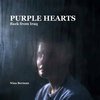My usual chain of random thoughts just led to this recollection: That one Christmas, my mom gave me a copy of a book called “When All the Laughter Died in Sorrow.” It’s the autobiography of Lance Rentzel, a good Dallas Cowboys and University of Oklahoma wide receiver whose career was pretty much killed after he was arrested for exposing himself to some little girls.
Why did I think of that just now? I was contemplating an excellent Washington Post story from the other day talking about one big problem the United States is having in Iraq is simple wear and tear on equipment. Since the war planners made such blithe (or unforgivably superficial) assumptions about how the military action would go, they grossly underestimated how many tanks, Humvees, Bradley fighting vehicles and other workaday army equipment the campaign would need. Since the toughest duty expected in Iraq after the first few weeks was dodging bouquets flung at the liberators, the repair budget was grossly underestimated, too. (Eventually, that leads to things like National Guard troops looking for armor scraps in garbage dumps in Kuwait.)
And thinking of that story made me think of Saddam and his henchmen and their laughable warnings that
Baghdad would become the graveyard for the invaders. I laughed to myself, anyway. And then I thought about how we’ve had 1,300 troops killed in Iraq so far and 10,000 wounded. Yeah, that’s hardly a morning’s work in some wars — check out the Civil War battles of Antietam. Or Fredericksburg. Or Chancellorsville. Or Gettysburg. Among many, many others. But Iraq, of course, is a much different kind of war. And numbers aside, there’s nothing about that old “graveyard” rhetoric that seems funny anymore.
And that made that book come into my head. I always misremember it as something like “When All the Laughter Turned to Tears,” or some variation on that. It’s a tragic story. From what I remember of it, Rentzel talked about how hard he’d driven himself throughout his childhood to excel. The book was part of his therapy, as I recall, part of coming to terms with why he’d done what he’d done. The book was praised, critically, and I imagiine Mom just saw it at Maeyama’s, the dependably good bookstore in Park Forest, and picked it up for me. Judging by the publication date, I must have been 18.
I’ve always wondered whether there was some kind of message in the gift, whether Mom was afraid I was a pervert in the making or something. Probably not. I hope not. It still occurs to me, though.

